| The main battle arm of the American Revolution was the British Brown Bess, and it has neither barrel bands nor a patch box. Both of those features because popular much later, on rifled barrel guns. For the most part, the guns of 1776 were smoothbore muskets, and though the gamemakers did seem to employ some historians, this fact is absent in AC3. We shot guns from Pedersoli for this article, which is an Italian, old world gun company that makes replicas from the flintlock era right up through the late 1800s. Pedersoli guns are the most accurate and shootable replicas in the world, and if you don’t own and shoot one you are missing out. We brought out some fans of the Assassins Creed III video game to try the real thing. The flash and smoke of the side ignition pan takes some getting used to, but if you enjoy shooting, there is nothing like a real flintlock. Muzzleloading firearms use exclusively black powder or black powder substitutes. Because of the way a flintlock ignites, it is generally a good idea to use real black powder. We used American made Goex, the FFG, course variety for the main charge, and extra fine FFFFG for the flash pan. The projectile is a .690 caliber pure lead ball that we hand cast from bullet moulds. The one of the left is the Lyman mould and the one on the right, with a much less pronounced sprue cut is the Lee aluminum mould. Both are available through Dixie gun works, as are the cast balls themselves, in .690 and .715 caliber. Without tin in the mix it is hard to fill out big balls like this without some voids, but for one, you can put tin in the mix, and for another, there is nothing approaching actual accuracy with these guns regardless. The blue and white cloth you see here is called pillow ticking and is available from Dixie in bolts of cloth. Any 100% cotten material will work, including the clearance pile at your local quilt shop or even Wal-Mart. Just beware that when you use a big piece like I do, with lube, it tends to catch fire and burn after you shoot. I have always used Crisco for lube in these loose ball flintlocks. You can spend more money on black powder lubes, but some of them are petroleum based and don’t keep the fouling soft. A big patch prevents the ball from getting away from the patch and striping the bore with lead on its way out, but again, they do tend to burn on the ground. Note that the lube goes on the outside, not the ball side. Unless the Crisco is really soft it doesn’t kill your powder, and even then, just put in a little more. When the bore is clean the .690 patched balls don’t need a “ball starter” like you would use with a rifle. This is the perfect fit for the .750 bore, and you just push it down with your ramrod. The firing mechanism of the flintlock looks complicated, but it is just a hammer on a spring that holds a piece of flint. The flint strikes the steel frizzen, popping it open at the same time and sending sparks into the pan, which burns and ignites the main charge. I ordered the 1 and 1/8th English flints for my rifles from Dixie. You also need some leather strips to hold them in the hammer. You can get away with a lot less FFFFG powder than this in the pan, and you don’t need the small priming flask you see here, but it does make things easier. Bench resting a flintlock musket is a little overkill, because they are not capable of anything you would normally expect in accuracy. Neither the Brown Bess nor the Charleville have rear sights, and the Brown Bess uses its bayonet lug as a front sight as an afterthought. The Charleville, bottom, has a brass rear sight soldered onto the top which, coupled with the barrel banks and other hardware makes the gun look really historic. At 15 yards, this “center mass” group makes you understand the importance of “Don’t fire until you see the whites of their eyes.” One of Connor’s favorite tactics in the game is what the developers call a “meat shield.” They obviously didn’t test the ballistics of a patched roundball fired from a British Brown Bess, because if they did they would discover that the ball would go clean through both the shield and Connor, probably revealing daylight. |
Davide Pedersoli
www.davide-pedersoli.com/
Dixie Gun Works
https://www.dixiegunworks.com/
In the American Revolution, the principle battle longarm was the Brown Bess musket. A musket is different from a rifle because it has no rifling, so the bullet doesn’t spin. The Brown Bess is .75 caliber, which is essentially an 11 gauge smoothbore shotgun, used to fire, historically, a cast .69 caliber lead ball weighing just over once ounce. The range on a Brown Bess is a couple hundred yards, but because the ball isn’t spinning, the musket wasn’t used as an aimed weapon past 20 yards or so. Companies of men fired batteries of musketfire to rain lead balls down upon the opposing force, hoping that someone would hit something. This would be followed by a charge with bayonets, because after a couple shots with traditional black powder (smokeless wasn’t invented until 125 years later), shooting a musket more than a couple times without cleaning can be difficult. This mode of war made for bloody battlefields, and a lot of hand to hand, in your face combat. The Brown Bess doesn’t get a lot of play in the media normally, but a couple years ago the video game Assassin’s Creed III set itself in the Revolutionary War. The main character is Connor, and he uses a lot of bladed weapons and a bow, but he also gets some action with the Brown Bess, killing Red Coats of course.
Connor’s favorite trick is what the game developers call a “meat shield,” when he grabs a British Red Coat and uses him to absorb musket balls from his adversaries. In real life the musket ball would go right through and kill Connor just as dead as the men he is using for his shields, but as our allies in the American Revolution, the French, would say, c’est la vide. It is after all just a video game. You will here the saying “Don’t fire until you see the whites of their eyes” in the game, made famous at the Battle of Bunker Hill, but this is more a testament to the inaccuracy of the muskets than to a shortage of ammo or lack of firepower. The Brown Bess musket is a beast, matching approximately the velocity of a 45 ACP, with a bullet roughly twice as heavy. Waiting until a charging enemy is in close range will not only gaurantee you a hit, most likely the bullet will travel through at least two attackers before embedding itself in the third of fourth. With a 3/4 inch wound channel, you might even see daylight through the guy’s chest, and I bet that is even somewhere in the game.
I suspect that 99% of the people who play AC3 will never notice any of the historical inaccuracies in the game. Few of us are well versed enough in the American Revolution for it to matter, but if you go by the actual firearms as an example, most likely AC3 is a historical disaster, even though it looks really fun to play. The developers did employ historians for the creation of AC3, and a couple are even interviewed in the introductory clips for the game, but nowhere have I found any of them to answer for the inaccuracies with the weapons. The biggest problem is that all of the muskets have a patch box in the stock. Historically the Brown Bess and all of the other muskets of the war were devoid of this feature. The year 1770 is considered approximately the birth of the rifle, or what was called the” rifled musket” at the time, but they did not play a big role in the American Revolution. The classic rifles with patchboxes, the “Kentucky Rifle” and “Pennsylvania Rifle,” did not gain a reputation until well after the war was only a memory. Connor kills his adversaries with a number of these patch boxed muskets, as well as a fairly ornate flintlock pistol. The developers probably thought it would make the guns look cooler to have more flash, but the historically accurate guns didn’t have a lot of glitter. The Brown Bess was issued “in the white,” with no finish whatsoever, and it doesn’t even have barrel bands like you see in the game as well.
We shot the Pedersoli Brown Bess primarily because it was the main battle arm of the war. But Pedersoli also makes a significant musket called the “Charleville,” which was made in France back in the day and is 17.5 millimeter, or .69 caliber. The first fighters in the American Revolution weren’t in an “American” army, because there was no America at the time. Most colonists had been issued a Brown Bess as part of regular militia, to fight off Indians and maintain order, and these guns were used in all of the early battles of the Revolutionary War. The Charleville didn’t come in until late in the war when the French, jumping the bandwagon of our initial success, decided to send us some arms. For the most part both sides of the conflict used mostly the Brown Bess throughout the war regardless. The Charleville was of course another fun gun to shoot, and it is the same caliber as the pistol we selected, the French AN IX. This pistol was chosen because it resembles the one carried by Connor in the game, and it is a smoothbore, which is almost definitely required to be historically accurate, especially in the naval scenes. The pistol itself was however not made until 1801, but it was the closest we could come to the period. Pistols were not used very much prior to the turn of the 19th Century. Connor, and the gamemakers, don’t seem to mind the historical inaccuracy and some of the pistolcraft is the most bloody and epic of the game.
If you have never shot a flintlock, there is nothing quite like it. It is charged like any other muzzleloader, by dumping the powder down the barrel, followed by the projectile, but there is no primer to strike, because flintlocks came before primers, or their predecessor, the percussion cap, were invented. To ignite the powder charge in a flintlock, you fill up a pan next to the barrel with the finest small grain of black powder. Held in the hammer of gun is a piece of stone, generally flintstone of course, and when the trigger is pulled this stone strikes a piece of steel, called the frizzen, creating a spark. The spark ignites the side pan of powder, and the flash from the powder travels through a small hole in the side of the barrel and ignites the main charge, firing the gun. There is no crack like with a modern rifle, and there isn’t even much of a boom. Click, poof, bang is the way I have always described it, and the sound effects people in AC3 did a pretty good job of getting it right. Once you fire a flintlock most likely you will be hooked. It is a lot of fun to run an AR for an afternoon at the range, or your favorite black pistol, but one shot at a time, loading over three or four steps for each round as you go, a flintlock takes you back in time. War is no fun, but it is where heroes are sometimes made, and some of America’s earliest heroes made their mark with a flintlock, many with one of these wartime flintlock muskets.
As you can see from our targets, this was not an exhausted test for accuracy. The rifle targets were shot at 15 yards and the pistol at 5 yards. These are smoothbore guns, so there is not going to be a combination of loading vs. projectile vs. powder that is going to give you anything like “good” accuracy. No matter what you do, every bullet that leaves the barrel of a smoothbore is going to hook one way or another, and it will never be the same angle. We shot what was the standard issue for the Brown Bess, a .69 caliber round pure lead ball, and pillow ticking for a wad. For lube my old standby has always been straight Crisco, applied to the outside of the patch. This combination goes down a clean bore just right, and even after three or four shots without cleaning it can still be used. The Crisco keeps the black powder fouling soft and if you use a nice big patch that wraps all the way around, there is no leading at all. Beware however that the patch does generally catch fire and continue to burn, so if you are in the woods you have to chase it and put it out. I use 80 grains of FFG Goex black powder as the main charge, with FFFFG Goex in the pan. If you live in a state with a dedicated muzzleloader season, generally the local gunshop is going to have black powder. If you can’t find it, I sometimes order it in bulk from Powder Inc.
For projectiles, you have a choice to cast your own lead balls or buy pre-cast ones from Dixie. The Lyman .690 mould is $81, vs. $61 for 100 pure lead balls. The Lee aluminum mould is only $26 at Dixie, and it can be found slightly cheaper elsewhere online, and it comes with handles, which is an extra expense if you don’t already have some for the Lyman. The Lee mould makes a more round bullet with less of a pronounced sprue stem, but again, accuracy is not an issue here. Lyman also makes a .715 mould that I have read great reports about, and they sell that lead ball as well in bulk. With the extra 25/1000ths you will not have to clean the gun more frequently, or switch to a patchless ball sooner between cleanings. It may, however, prove to be more accurate if you plan to hunt with the guns. In a tree stand the effective range of the Brown Bess is not much different than a bow and arrow, so it is viable as a hunting weapon. Also note that we tried the Brown Bess with buckshot and it worked better than with the balls. Using the bayonet lug as a front sight, with no rear sight, we were able to consistently punch a ragged hole with the buckshot right at point of aim. For this we used the new 18 x .36 caliber buckshot mould from Lee. Without tin in our mix it didn’t fill out well, but shot is pretty much shot regardless, and a handful of buckshot performed really well. Note that I am intentionally using the spelling mould instead of mold, because though it is incorrect in America, Dixie uses mould for their search.
The Charleville was a bit more of a challenge, because somehow Dixie left the .662 Lyman mould I ordered out of my box. I was stuck using some .58 caliber balls that I had purchased for a different article. I found, however, that with two of the Ox Yoke patches you see here, the .69 caliber Charleville as well as the .69 caliber French AN IX shot wonderfully, and I didn’t have to chase the burning patches. When you are shooting smoothbore muskets there are no rules. In matches with them most successful competitors design a system where they start with a dirty bore, using a lubed patch, then, as the crud builds up, they switch to a thinner patch, then just a greased ball. Battle with these classic smoothbores was much the same. Both the Americans and British were issued paper cartridges for these guns, but when those ran out or couldn’t be shot, a flask of powder and just about every projectile imaginable was used, including lead shot, spent balls, and even a handful of pebbles. In the AC3 game, it doesn’t appear that Connor bothers with the time spent to load the guns, and you certainly won’t catch him cleaning one, but the bottom line is that these guns were difficult. Firearm technology evolved for a reason, but in 1776 all that was available was the flintlock musket, so that is what both of the American Revolution primarily used.
Cleaning long muskets is a very specialized task, and it is something you must prepare for before you go out shooting. Black powder is extremely corrosive and you can’t leave your guns dirty for more than a couple hours before they will begin to rust. In humid climates you may see fingerprint darkening in less than an hour. You can use shotgun cleaning brushes and swabs, but I have always preferred to use a standard .45 or .50 caliber bronze brush with a few patches wrapped around it. With Crisco as lube, you can get the inside of barrels sparkling clean with no abrasive brushes at all, and the best solvent is standard dish soap in warm water. This works in between shot strings as well as for final cleanup. After you slosh the soapy water, run some dry patches down until they come out clean and dry. If you know you can’t get to cleaning your guns for several hours after shooting, deactivate the black powder by sloshing some soapy water down the bore, and through the flash hole, and use the same soapy water and a toothbrush or gun cleaning brush to clean up the lock. pan, and frizzen. I don’t take these guns down like a modern muzzleloader. The Brown Bess seems to be held together by about a dozen small pins, and thought he Charleville has a more accessible barrel band system, it just isn’t worth it to take the gun apart in hopes of being able to get it back together without boogering the wood. I soak the metal parts and even the stock in Rem-Oil after my cleaning and the guns have never been the worse for wear. Just be sure, if you leave wet Rem-Oil in the bottom of the chamber after cleaning, to run a dry patch down before your first shot next time you shoot. Otherwise your powder will absorb the oil and deactivate, which will require a ball puller.
And that brings us to the official tips section. There are a few things you must have if you go shooting with one of these notoriously stubborn muskets. The most important is a ball puller. This is basically a wood screw attached to a cleaning rod accessory. If for some reason the gun doesn’t fire, like for instance, you forgot to pour the powder in before you rammed the ball down on top of the empty breech, a ball puller will save you from losing the rest of your afternoon of shooting. You screw the ball puller into the lead ball and pull it out. Usually it works great, and I found on these guns that the .50 caliber Thompson Center ones they sell at Wal-Mart work fine. You also should get a patch worm, because eventually you will get a cleaning patch stuck down there that you can’t get out. For a rod, if you use a multi-part, get two, because you will need extra sections to reach all the way down these long barrels. They do make single piece range rods this long, but they are generally going to be special order. Dixie is currently selling an adapter for your built in ramrod, but I haven’t tried it. The other thing is pipe cleaners for a clogged flash hole. The muzzleloading section in some gun shops carry some very good ones that are put out by CVA.
You will most likely find that the historical connection in Assassin’s Creed III is kind of weak and lame, but it was a great idea forced into what had to become and probably is a great video game. Most of the actual history was most likely brushed aside, but at least they tried. George Washington looks like a total badass which is cool. As for the supersoldier Mr. Connor, in the end, things probably didn’t work out any better for the Indians with the Americans in charge than they would have had the British retained control of her colonies. Connor would probably need a good 12 Step program if he were actually real and alive today. What we really need is a new and really good epic movie set in the American Revolution for a true “everybody wants one” revival to take place, and maybe AC3 will be the catalyst for that to happen. In the meantime, those of us with a historical bent can enjoy these remarkable replica guns from Pedersoli, and Dixie Gun Works carries everything you need to shoot them. It is funny that Pedersoli, an old world Italian gunmaker, is keeping American firearms history alive, but they do a fantastic job of it. These guns are not only safe to shoot, but you can also do so with a clear conscience that you are not damaging historically significant artifacts. You get to shoot an almost 100% genuine American Revolution musket in “as issued” condition, for not more than the price of a quality AR. Just remember, that should the need for another American Revolution arise, if a guy with an axe jumps into the battle and starts hacking away at your buddies, don’t just stand there and look at him. Shoot the son of a bitch for heaven’s sake.


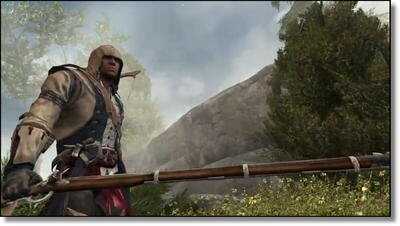
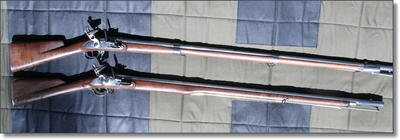
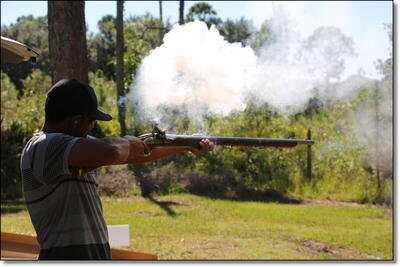
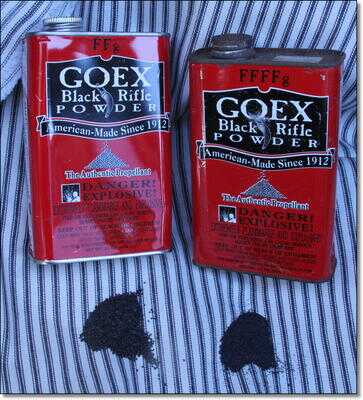



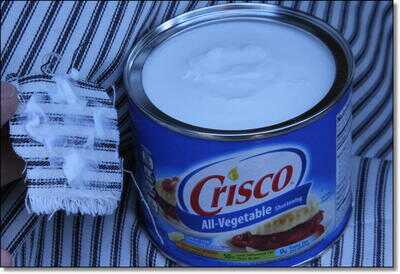
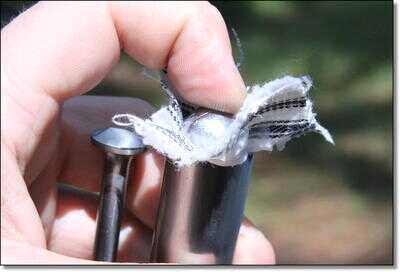
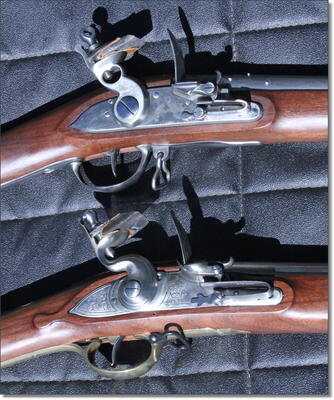
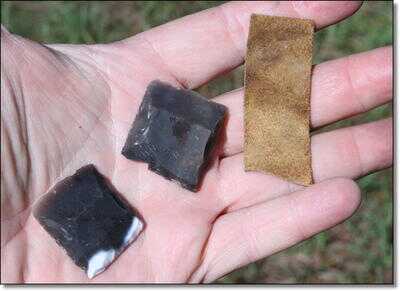
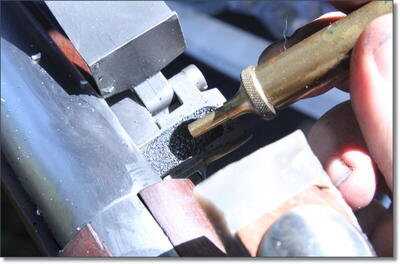
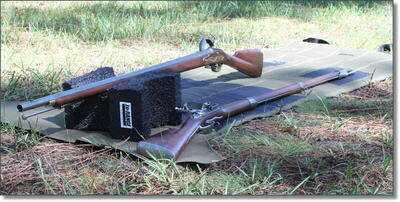
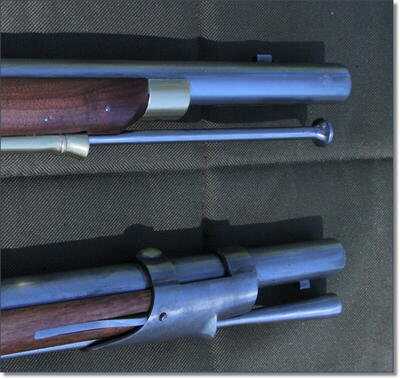
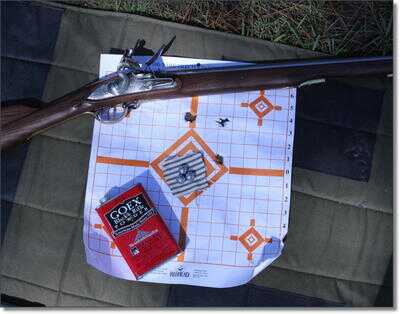
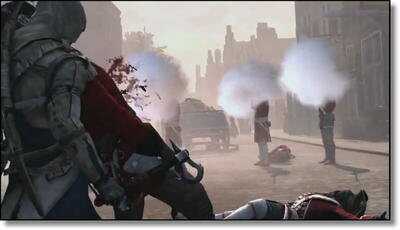
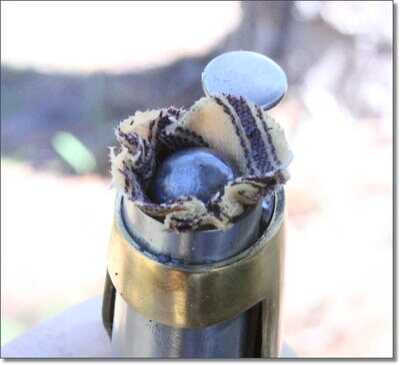
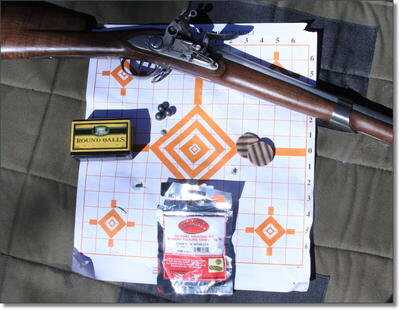
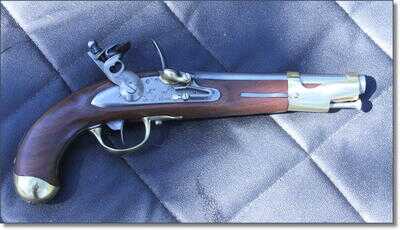
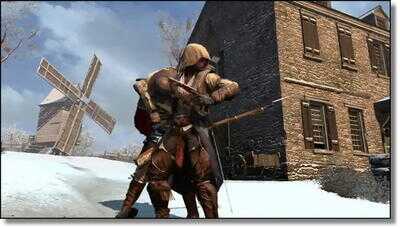
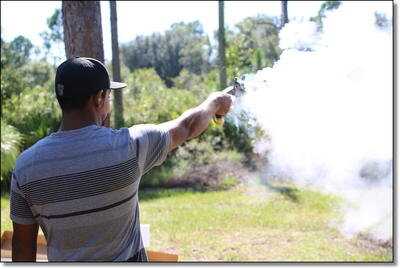
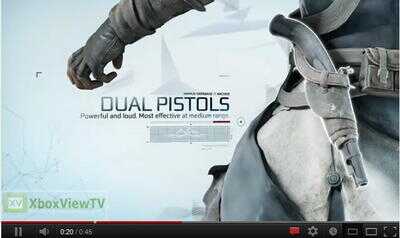
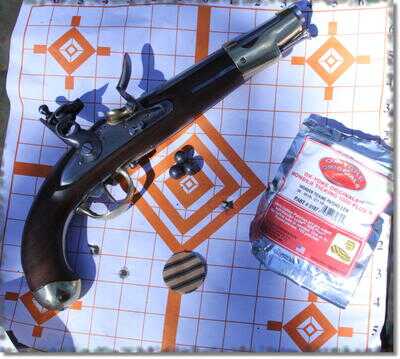
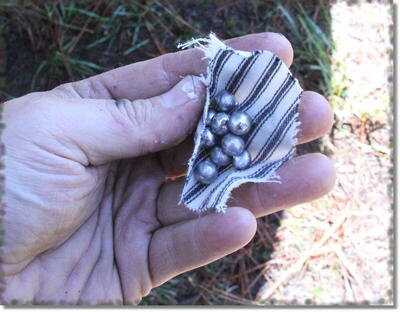
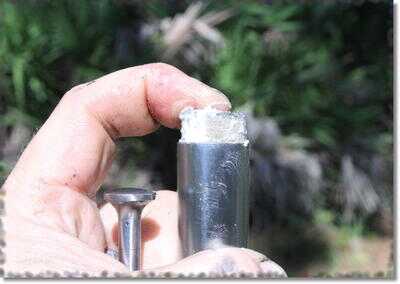
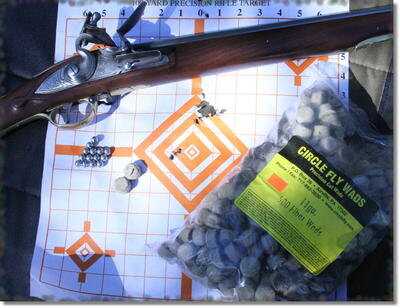
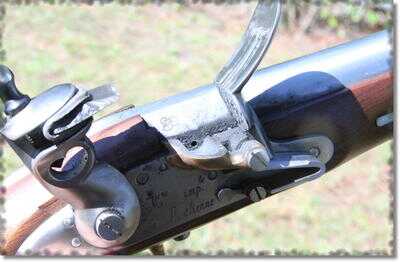
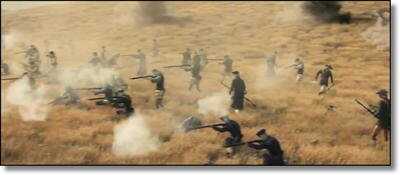
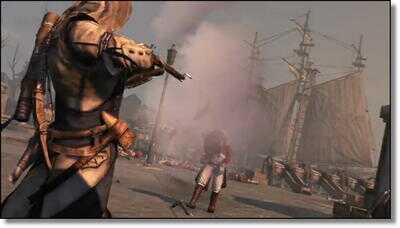
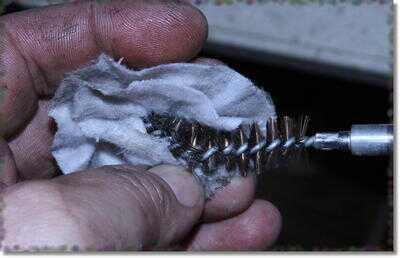
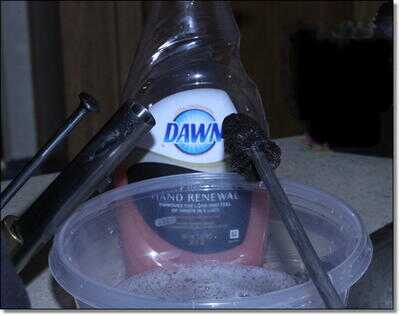
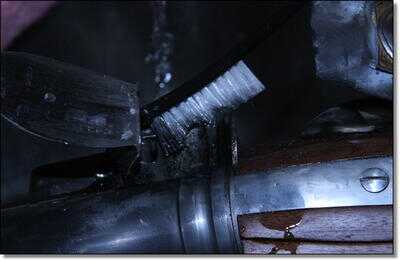
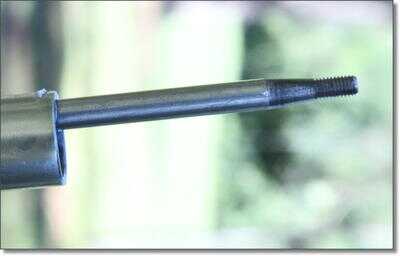
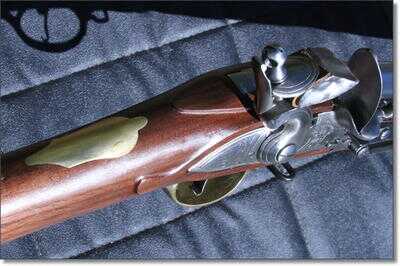
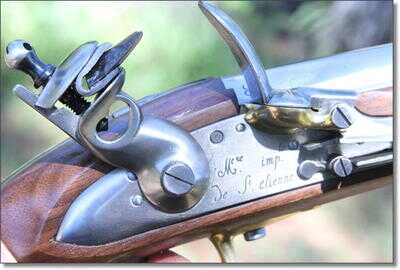
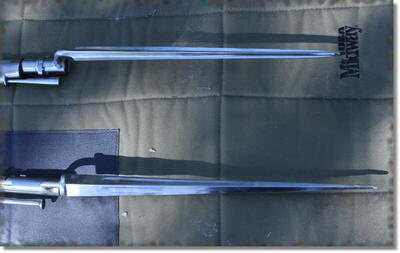
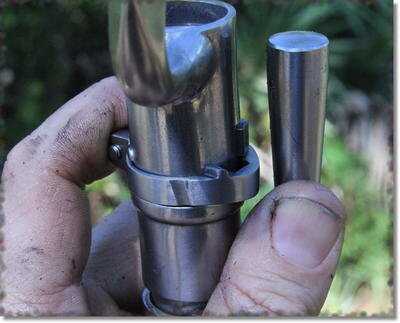
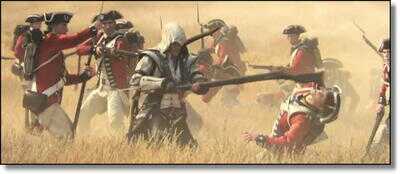
Looking for a realistic common 1776 Pistol Kit that fires mini balls at target practice. And maybe a firing kit of one of the three Brown Bess Muskets Rifle.
Hello I trying to get a feel of what a 1776 flint lock rifle and pistol match set number 2 out of 100 reproduced ,reproduced to cellabrate back in 1976
200 th year. Guns never Bin shot aging naturaly. Thanks for any help bob.
1.The Birth Year of the rifle/Rifled musket/ Rifled Bore is Approximately 1770 ? I think not !
2. There is no such thing as a Kentucky Long Rifle. That legend was started by an auther who wrote a book in 1925.
3. Long Rifles as they were known as were in fact produced in a number of Colonies, such as Pennsylvania, Maryland, Virginia, and North Carolina , I believe but not in Kentucky at the time, just a fact, The long rifle got its start from a German Rifle Known as the Jager~Rifle prounced Ya-ger they say it means Hunting Rifle, they were much shorter in length they were chambered all the way up to .80 caliber, Rifled barrel technology had been around a long time, but they were loaded Muzzle end and they were slow affair when compared to the Brown bess, A well trained British Infantrymen could load. aim and fire I believe it was 11 shots per minute. With a muzzle loading long rifle it was I think 3 to 4 shots per minute.
4. Than you have hey very interesting Ferguson Rifle of the British Army, a British Army Officer designed this rifle it was a Breach loaded weapon , you rotated the hand gaurd to the right and a plug in the rear of the breach droped down so you could insert ball and powder, you then rotated the hand guard to the left and the Breach Plug rasied back up and locked into place and you primed your frizzen and you were ready to go, It was a rare weapon but it was used on the battlefields in the war, In Fact Capt. Ferguson had General George Washington , in his sights , but George’s back was to Capt. Ferguson and he found it unsporting and didnot take the shot. If I remember Correctly Captain Ferguson was KILLED IN ACTION.
5. The Brown Bess was indeed for the most part .75 caliber, and there were multiple patterns of her , after all she was in service over a hundred years, New Land , the Indian pattern, there were shorter versions as well, also the British Forces also made use of different calibers to such as the .65 caliber.
6. Big misconception everyone has including me that the American Revolution was simply a Flint Lock war, that is totally incorrect, Match Locks were known to have been used and Wheel Locks were used and there is information out there the Wheel lock user perferred the Wheel lock over the Flint Lock, also other locks that look like flint lock were used as well.
7. Riflemen were used on both sides and the British Army had riflemen they were considered Specialized units Just like the Long Bow Men had been , They were considered Marksmen/Snipers .
8. When U.S. Forces started to receive supplys from France , their Musket of choice began to change, from the British Brown Bess .75 to the French .69 caliber and .69 caliber became standard issue for U.S. Armed Forces for decades after, in fact the French Musket was used to pattern U.S. Muskets.
9. Than there is the British Baker Rifle, I donot recall when it entered service most likely post revolution period, I do know for sure it was used in the war against France , there was a Famous British Rifle Regiment the Green Jacketts , If I remember correctly they trace themsleves back to Major Robert Rogers the Founder of the Rangers/ North West Passage fame ? U.S. Army Rangers/ French & Indian War all that .
I picked up one of the brown besses from Pedersoli and it is a great firearm. I found it was really too long for hunting so the barrel was taken down to 36″ (trapper style). Found that the point of aim was 2″ to the left at 25 yd. so like the did back then you find a fork in a tree and bend it a little at a time until it lines up. Our reinactor group tried to stay in the 1800 to 1840 time frame so it was legal to put a silver turtle blade sight on the front and use the slot in the tang screw for the rear. Out past 40 yds it is a crap shoot but at 25 yds it didn’t do too bad. It is hard for a deer to run off with a 69 cal ball in it. The only other thing that made mine better was to put a British musket style flash pan cover on to keep my sleeves and the person next to me on the firing line from catching fire.
Suggest the author learn to use a dictionary and spell before writing another article. Suggest someone in authority at NRA learn to edit poor writing, sloppy syntax, and incomplete sentences. Even captions with the article’s pictures were chopped up. Five minutes work in editing this piece would have made it worth keeping.
I agree. I found myself asking “doesn’t this write answer to an editor?!” several times while reading this. Even the proper use of spell and grammar checker would have helped. The writing quality and content gets a bit sophomoric, considering that it’s going to be read by people who probably shoot these smoke poles a great deal more often than the author.
Getting away from the english lesson and on to history… On this topic the author gets a C in my book. The vague references to the ‘birth’ of the rifle are incorrect. 1770? Try more like 1715 and referencing German-born gunmakers bringing the trade and the Jaeger rifles to the continent and the guns’ evolution, morphing to adapt to the terrain and the people using them. Rifles were used by militia on a daily basis during the 7 years war (F&I) and especially during that time, they generally all had patchboxes. Look up the names Jacob Dickert and John Beck as a starting point or do even a mild skim of Joe Kindig’s written works. If he is referring to the ornately constructed and carved rifles with many brass/silver components and accents, then yes, those became more prominent leading into the American Revolution.
You have covered it well, thank you. I have a flintlock with rifling and two cap locks with rifling. I started in Pennsylvania muzzleloader season in about 2002. At that time a flintlock was all that was allowed. I don’t know what the law is today, as I now live in Michigan.
Bugger the Revolutionary War; only thirty years prior the French all but exterminated the Brits and their colonists in the French & Indian War. Even before that the French opened the frontiers of Canada and the US from Maine to Louisiana. If the French dropped their guns it was to load their canons.
To which French & Indian War do you referr to ?
As there were a number of them ?
The last one started out well indeed for the French, than it went South !
It’s very simple to find out any matter on web as compared to books, as I found this paragraph at this web
site.
French dropping the guns and running away?
Yeah, so it wasn’t the French Navy that came and saved the Thirteen Colonies. Take a walk around D.C. and see the French hero statues. François-Joseph Paul Comte De Grasse or Jean Baptiste Donatien de Vimeur, Count of Rochambeau. As an American citizen, who lives right near the place of the final naval battle for American independence. (Battle of the Chesapeake) the French being cowards statement has no basis. Battle of Belleau Wood in WW1, or Raymond Aubrac of the French Resistance forces in WW2. If it wasn’t for the French intelligence groups in Normandy, France, Operation Overlord would have been a massive failure. Learn your damn history. Besides your lack of historical knowledge and appalling usage of bringing real world accuracy to a video game about secret assassin orders killing countless British soldiers with little problem. I fail to see your reasoning, just fire your guns and don’t write articles.
And don’t forget Napolean! Isn’t he the father of American fries?
There is no question there wwre a lot of French Heros In the American Revolutionary War, they saw the vision our founding fathers were fighting for and they took that vision as their own aka adopted it.
My ersonnel Oponion this was the end the end for French Royalty .
Than the French Republic died before it ever really got started, and the Royal Family was slaughtered, and then the animals stared to eat their own and this opened the door to Napolean, who was no Republican and his Empire, which in the end was shot down in flames .
As per WWI, if it were not for Belgium, Great Britian and there colonies and the French Colonial Troops, France would have fallen, During the Battle of the wood , French Forces were driven to the outskirts of Capital City of France, Paris, The Government was packing its bags and preparing to move, French Forces were in retreat, and the United States 2n Infantry Division Made up of U.S. Army Personnel and U.S. Marines said they were staying put, and the divison fought off and pushed back 98,000 Germans . and saved Paris. and the French from Defeat . a war whch they helped start.
Espero un Sobresaliente en Historia contemporanea, ya que no puedo examinarme.ciencias Politicas.Fisica.Literatura.
llegado a este punto ¿Que relación hay entre la carga de Lee y la Carga Napoleonica? El General visito España, hay dos botes como de FF servidos antes de su llegada al Imperio del sol Naciente.
las lineas de fuerza son estables, no hay percepciones significativas desde mi posición,simplemente mensaje interceptado. Tienen mala leche eso si.
Latitud y Longitud no descritas, frente: Europa Occidental. Parece que confirman en las Prisiones proximas al Norte de China.
Just to point out that it is not accurate to state that rifles and riflemen did not play an important part in the revolutionary war. The Jaeger rifle was developed in The Lancaster region of Pa. c 1725 by Pennsylvania Germans who brought rifling technology from Europe. These rifles evolved into what we now call the ‘Pennsylvania rifle’,or later ‘Kentucky rifle’…. better called the ‘American long rifle’. Long rifles were often used in the Revolution by Northern militia who were farmers and hunters from the countryside. They served as sharpshooters/snipers due to the long range accuracy of their long rifles. The rifle was handicapped, however, by the amount of time it took to reload-over a minute, while muskets could be loaded and shot 3 x per minute but with far less accuracy. Also, long rifles from the Revolutionary war period often had wood or plain brass matchboxes.
Yea, like five of them. There is very little documented history of rifles in the American Revolution, let alone significant history. Over a minute is generous, considering you get one shot between scrubbings for anything close to real accuracy, with patched roundballs as maxiballs hadn’t been invented.
I can shoot two (2) patched balls from my long rifle into a 1″ group at 50 yds in a minute. You need to practice more.
Well duh.
todo depende de como prepares las cargas, los Kentucky espanoles dejan mucho que desear los asientos del cañon llegan a distorsionarlo, es muy triste. Con los Tower originales y los Remington a O.57 es una fiesta, exacto.
The rifle played a much more significant part in the Revolution after the British determined on their “Southern Strategy”. The prevalence of rifled arms encountered in the South forced the Brits to alter their closed ranks tactics, and were major factors during the battles of King’s Mountain, Cowpens, and Eutaw Springs.
Colonists with rifles entering militia units were required to turn over their rifles and were issued muskets because the goal was to mimic standard British infantry tactics- something that did not work out too well for us until we got more training from European professionals like Baron von Steuben. Teams of riflemen were used as snipers however.
The rifle was despised by the militaries of the day on practical and moral issues. Practically, rifles were full stocked to the muzzle and could not be mounted with a standard socket bayonet. (another French innovation attributed to the region of Bayonne). The barrels were all individually made and had their own bullet molds to match for accurate shooting- no standardization of ammunition. And finally rate of fire of rifles was significantly slower than that of the musket.
On moral grounds, the British infantryman leveled his musket by looking right and dressing his alignment to match his fellows, he did not even look down the line of his weapon (thus, no need for sights). Therefore, anybody he hit was considered taken down by “an act of God.” Whereas a rifleman took aim and shot at an individual which was considered to be murder. That did not prevent the British from employing riflemen themselves principally the Prussian “Jaegers.” However, the Jeagers could not match American long-rifle’s range & accuracy. The problem was loading a ball from the muzzle that would grip the rifling. The Jeagers solved that problem by beating the ball down the barrel with a rod and mallet. This of course pummeled the ball out of round form and did nothing for accuracy but, it was better than the smooth bore musket. Another factor was that the Jaegers rifles were shorter. The Americans long rifles were loaded with a lubed patch around the ball wiping the barrel between shots, protecting the ball and giving a greater rate of fire than the Jaegers could manage. The long rifles provided a longer sight radius and allowed for more complete burning of the slow burning black powder used at the time. All combined for an accurate range of about 250 yards, unthinkable to the British who compared to the Jaegers whose accuracy barely exceeded 100 yards.
My comments are directed principally towards Washington’s army of the northern colonies who strove to organize and fight like British regulars which, after some spectacular defeats, they did manage to accomplish. However, the southern militias never really managed to field and maintain a significant trained army and tended to get slaughtered and scattered every time they tried to fight the British until Nathaniel Greene showed up with a cadre of “Colonial regulars”. He wisely asked the southern militias to only fire 2 shots and after that they could go. By such tactics he lead the British down a string of minor victories while stretching their supply lines in his retreat to their (the British) final defeat at York town.
As a rev war reenactor i have not seen the game but believe your article is spot on as far your weapon testing and comments go. Good job decribing loading firing and cleaning these weapons . Have never fired round balls out of my Bess or Charley but have destroyed a watermellon at 3 yds with a charge of 100 grs of FF nor do i use 4f to charge the pan as 2f works fine while doing battle reenactments . VOTE on Nov 6th
Wow, first and foremost… it’s a GAME!
To the historical accuracy, again it’s a GAME.
Now to the argument that the British Empire or ‘bumbling Brits would think it’s a good idea to piss off your allies by wiping out entire Indian villages will-nilly’… it was rarely done willy-nilly, but it most certainly WAS done, not just in the Americas, but throughout the history of the empire, in any and every place there were native peoples or as they so loved to refer to them… ‘savages’! Again, this is a game, so enjoy it. IF you’re a lover of history, enjoy the fact that they are bringing pieces of it to life to people, who for the most part wouldn’t even know it existed! And if you’re worried about the ‘historical inaccuracies’ then take this opportunity to help to educate and turn people onto more of the history you love, brought to life through this medium and your passion for it!
Personally, I’m not a fan of this series, but with my love of history, enjoyment of FPS and love for the legend and lore of the American Revolution, am looking forward to this and may buy a whole new console, just to play this!
Yeah, I want that pistol too (French 1736/66 pistol). It was the favourite of the American forces, it was reliable, as accurate as the long-arms were, and once you shot it you could bludgeon people with it by reverse-gripping it. At a calibre of .66, it even makes the celebrated .45acp round look a bit anemic when it comes to outright damage to the poor fool who gets hit by one.
The metal and the wood on it are nice too.
Now to toss out a question on the game: There were handguns that were very accurate at that time and possibly what Connor might have carried: Duelling Pistols. They came in pairs, were scary-accurate even as smoothbores, and most had rear sights. He could have obtained them the same place he obtained his rifle- one of his first kills was an officer. For a game, its pretty good…and I get a kick watching the commercials. Connor seems to have switched gender…
You are right, there were very accurate, rifled, pistols available at the time. They were called “coach, or hunting pistols”. Dueling pistols, by rule of the “Code Duello” were never rifled, nor sighted. In fact, using a rifled or sighted pistol in a duel could earn you a bullet in the head from a second, or a hemp necklace for murder.
And you guys are complaining about a FICTION video game BASED on a real-world event. I doubt there was an assassin order that has an individual go out hacking all of the King’s Men (Red Coats) as depicted in the game, it’s a video game; while using real-world events and weapons, it’s still a video game. Heck, I wouldn’t be into guns if it weren’t for a WWII-based video game, Call of Duty 2; I might just be some liberal wacko talking down guns and eating knish. I also know you can’t blow-up a propane tank with a single regular 9mm round, can’t jump 30′ without breaking your leg, can’t run 1000mi without taking breaks and can’t fire a minigun from the hip.
Hollywood is dumb, but they are not into it for accuracy, never had been.
Oh and the flintlock pistol that closely resembles the one on the main character is the French 1763/1766 model(s), which is the precursor to the AN IX. http://www.loyalistarms.freeservers.com/176366Fpis.html
It is ridiculous that they are beating up a video game. What did they think the guy was going to sit around and eat American fries?
Now I want that pistol.
Yeah, those french gun droppers. They must of dropped an awful lot of them while conquering all of Europe, a good chunk of Africa, the near east and on that little expedition they made to Moscow. Wellington just had to walk out on the field and say “Boo!” as I recall.
Just because you’re an American doesn’t mean you have to learn your history from Hollywood’s idiot screen writers and GW Bush administrations’ half assed propaganda.
The rosters of commanders and a large number of troops for Napoleon’s armies were (gasp) not French. Napoleon himself a Corsican. True the French colors were in the places you state. However; that was the early 19th century. In the 20th century the French didn’t win anything with out serious allied help. This is not to say that the French do put some outstanding units and individuals on the field. But not going to war the French as an ally is like going deer hunting without an accordion.
I agree somewhat, most folks get their only history from Hollywood. So a skewed view of the world from Braveheart to U-571. The scripts are slanted. The intellectually lazy don’t bother to see any deeper, to find out what was actually happening during that time and take the script as fact.
Heh. I do take the script as fact for what I’m going to see in the movie, unless said movie has one of those Superstars or a Director who re-does the story as the thing is being shot.
And as for History, Hollywood is a superb example of how the credulous are separated from their money.
Wow, this U.S. need for villains in every era or war seems to be getting a little out of hand. First, Hollywood steals Britain’s WWII thunder with the historically inaccurate film, “U-571”, and now we have this fluff. This storyline seems to be taken straight from some of Mel Gibson’s screenplay of “The Patriot”, where we have British soldiers commiting all kinds of completely undocumented atrocities (locking civilians in a barn and then setting fire to it? never happened). If anything, the Native Americans were more sympathetic to the British cause and saw them as a means for getting rid of the hated colonists; many tribes fought for the British and I doubt that even the incompetent, bumbling Brits would think it’s a good idea to piss off your allies by wiping out entire Indian villages will-nilly. It certainly doesn’t seem to pay to be America’s oldest and most staunchest ally.
You should see what Hollywood liberals do to us here!
General (Lt. Col. at the time) Sir Banastre Tarleton’s atrocities in the back country of South Carolina during 1780 are well documented. His mixed ” British Legion” of dragoons and infantry slaughtered a unit of militia after they surrendered at Monk’s Corner, and later slaughtered unarmed soldiers, women (who were also raped) and children after overrunning a position near Camden. The burning church scene probably never happened, but atrocities are documented. The Native Americans (Cherokees and Catawbas in this case) were allied with the French in the 1760’s, and hated the British for encroaching on their territories in SC and NC.
It wasn’t U517 it was U505 and it was captured by Capt Dan Galloway aboard the USS Guadalcanal which was a LPH.
The U505 was depth charged and forced to the surface. The U boat crew opened the sea cocks, armed the self destruct charges and abandoned ship while the U505 floundered on the surface. Capt Galloway sent a boarding party over to try and capture the submarine. They boarded it shut off the sea cocks and disarmed the explosive charges. Now this was quite a feat. None of the boarding party from the Guadalcanal had not the slightest idea of how a German U boat functioned or where the sea cocks were or even how the explosive charges were rigged. They did manage to save the boat. What we did get was an enigma machine which was state of the art increption for sending and receiving top secrete operations orders from Germany to the German U boat fleet at sea. This proved invaluable for the US and allied forces at sea in the Atlantic during WW11. The U505 is currently docked high and dry at the museum in Chicago for all to see. The enigma decrypter machine was at the time I toured the U505 displayed in the COes stateroom.